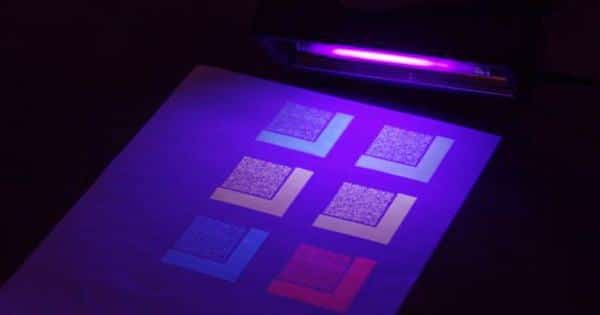Invisible ink is a favorite way to pass information without attracting unwanted attention, over the ages computers have become the main form of our communication. It may have always been more common in detective stories than in real life but it was easy enough to make at home. With the rise of information technology, this concept may become less important in popular culture, but the demand for fluorescent inks that can only be exposed to ultraviolet light is increasing. Existing people just don’t do so well.
For all the roles that computers play, “paper still plays an influential role in storing information,” a new study in the journal Matter Notes. Traditional homemade invisible inks can be great for hand scrolling notes to tell people where to look or who to look for, but printing long documents is something else.
Manganese from Nanjing University coated the paper with complex researchers and turned it into a kind of corrosive whiteboard. The cheapest and most environmentally friendly medium applied with jet printers is identified with water. Anything printed disappears under normal light but reveals itself after
being illuminated in the ultraviolet at 254 nanometers, a very short wavelength even for bee-like creatures that can see in close UV.
“Most fluorescent protection inks on the market for recording confidential information are environmentally friendly and cannot be erased. Paper is only a disposable recording medium”. “The rewritable feature significantly reduced the cost. The cost per print is estimated at RMB0.014 ($0.002),” said senior author Dr.
Qiang Zhao said in a statement.
Once the message is read it is easy to prevent it from falling into the wrong hands. Instead of burning the message (leave it in a self-destructing state) blow-drying the paper for 15-15 seconds not only deletes the message but also keeps the paper ready for printing again.
The manganese coating is also having less of an effect, including the toxicity of those handling the paper. Environmental footprints may not be in mind for camouflaged messengers, but Zhao insisted that it is not just ink that makes this score better.
Like all protection systems, Zhao’s products have their weaknesses. If a paper printed with a secret message falls into the wrong hands, they identify that there may be a message on the blank page and if they are aware of the technology they
will probably be able to shine a suitable ultraviolet light on the material and reveal confidentiality.
In this case, only the photoluminescence lifelong image, whose availability is limited, will reveal the hidden text. In this case, Zhao goes one step further, combining a suitable coating with magnesium chloride and magnesium bromide inks that are invisible to both sunlight and UV.














